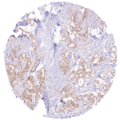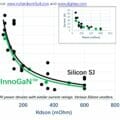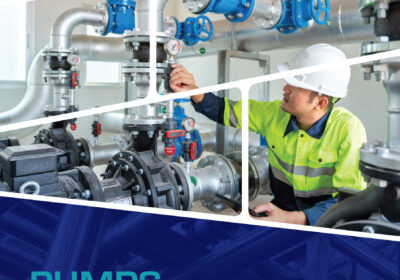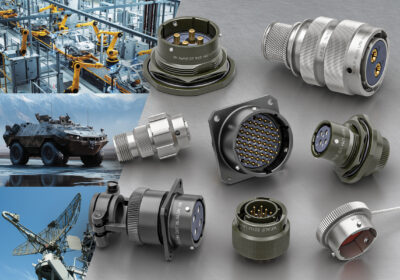Jochen Kern, Head of Sales & Marketing, micrometal Etching Group
Heat exchangers play a crucial role in various industrial applications, from power generation and automotive systems to HVAC systems and aerospace technology. The efficiency and performance of heat exchangers are directly related to their design and manufacturing methods. One manufacturing process that has proven to be ideally suited for producing high-quality heat exchangers is photo-chemical etching (PCE). This innovative technique offers numerous advantages over traditional manufacturing methods, addressing key challenges while paving the way for innovative heat exchanger designs.
Advantages of Photo-Chemical Etching for Heat Exchangers
PCE, also known as chemical milling or photo-etching, is a precise and versatile manufacturing process that involves selectively removing material from a metal sheet using chemical reactions. When it comes to producing heat exchangers, this method presents several notable advantages.
For example, heat exchangers often require intricate and complex geometries to enhance heat transfer efficiency. PCE excels in producing intricate patterns, fine details, and complex shapes that are difficult to achieve with conventional methods like stamping or machining. This allows engineers to design heat exchangers with optimal fluid flow paths and heat exchange surfaces.
In addition, PCE provides exceptional dimensional accuracy and consistency across large production runs. This is crucial for heat exchangers, as even slight variations in geometry can significantly impact heat transfer performance by, for example, altering fluid flow patterns and surface interactions, leading to changes in convection, conduction, and radiation mechanisms.. With minimal variation in tolerances, heat exchangers manufactured through the PCE process ensure reliable and predictable performance.
Heat exchangers must also withstand various operating conditions, including temperature, pressure, and corrosive environments. The temperature at which heat exchangers operate, for example, directly affects the material used to make them due to its influence on thermal expansion, mechanical strength, and corrosion rates, determining the material’s durability and performance under specific conditions. Extreme temperatures can lead to thermal stress, material degradation, and potential failure. PCE works with a wide range of metals, including stainless steel, copper, aluminum, and titanium. This flexibility allows engineers to select materials that are best suited for the specific application’s requirements, ensuring durability and longevity.
Finally, the ability to create intricate patterns and surface textures through the use of PCE improves heat transfer efficiency. For example, heat transfer efficiency can be enhanced by creating intricate surface patterns and textures that promote turbulence and disrupt laminar flow, thereby increasing convective heat transfer coefficients. These engineered surface features amplify fluid mixing and boundary layer disruption, facilitating more effective heat exchange between the fluid and the solid surface, all of which contribute to improved overall heat exchange performance.
Challenges in Alternative Manufacturing Processes
While PCE offers significant advantages, alternative manufacturing processes present several challenges when it comes to producing heat exchangers.
Conventional methods like stamping, welding, and machining are constrained by their limited ability to create intricate and complex geometries, resulting in suboptimal fluid flow patterns and less effective heat exchange surfaces in heat exchangers. As a consequence, the overall performance of these heat exchangers is diminished. Additionally, these techniques struggle to reproduce intricate internal passages and features essential for efficient heat transfer and fluid dynamics.
Traditional manufacturing processes are also susceptible to tolerance variations caused by factors such as tool wear, thermal expansion, and machine inaccuracies. These inconsistencies can detrimentally affect heat exchanger performance by disrupting precise geometries and altering flow pathways. Suboptimal tolerances can impede proper fitment of components, hinder uniform fluid distribution, and hinder efficient heat transfer, ultimately compromising the overall effectiveness and reliability of the heat exchanger, and posing a challenge in maintaining consistent efficiency across a production batch.
As discussed, certain heat exchanger designs demand materials with specific properties to endure extreme conditions. However, the limitations of traditional manufacturing methods can restrict the range of materials that can be effectively utilized. Many traditional techniques are optimized for specific materials and may struggle to handle newer, unconventional materials or those with unique properties required for specialized applications. This restrictiveness hampers the ability to tailor material choices to suit specific heat exchanger requirements, limiting the design’s overall performance, efficiency, and suitability for diverse operating conditions.
Finally, conventional manufacturing procedures, sometimes involving multi-step processes such as cutting, shaping, and welding, tend to extend production timelines and increase costs due to their inherent complexity and sequential nature. Each additional step requires specialized equipment, skilled labour, and quality checks, leading to longer lead times and higher costs. Moreover, the need for coordination among various processes can introduce delays and increase the risk of errors, further contributing to the overall time and cost overhead when making heat exchangers.
Innovations in Heat Exchange Design and Manufacture with PCE
The adoption of PCE for heat exchanger production opens up exciting avenues for innovation in design and manufacturing. Firstly, PCE enables the creation of micro-channels with intricate geometries. These micro-channels facilitate efficient heat transfer by increasing surface area and promoting turbulence, leading to highly compact and efficient heat exchangers. This innovation is particularly valuable in applications where space is limited, such as in electronics cooling or aerospace technology.
Second, engineers can use PCE to design and manipulate surface textures that enhance fluid flow and heat transfer efficiency. By strategically creating patterns that promote turbulence and disrupt laminar flow, they can optimize convective heat transfer coefficients and improve overall heat exchange. This customization of surface patterns to match specific applications enables heat exchangers to achieve elevated heat exchange rates, resulting in heightened performance and increased efficiency tailored to the precise operational requirements.
PCE also allows for the precise combination of different metals and materials within a single heat exchanger unit. This opens the door to creating hybrid heat exchangers that leverage the strengths of various materials while mitigating their weaknesses, enhancing overall durability and performance.
Also of critical importance, the rapid prototyping capabilities of PCE empower engineers to swiftly test and iterate heat exchanger designs. With PCE, engineers can efficiently create intricate surface patterns and textures, allowing for the rapid production of prototype heat exchangers with varying geometries. This rapid iteration process enables engineers to assess performance, fluid dynamics, and heat transfer efficiency more effectively, leading to quicker design refinements and a streamlined development cycle. This accelerates the development process and facilitates the exploration of innovative concepts, ultimately leading to optimized designs.
Conclusion
In the realm of heat exchanger production, PCE stands out as a revolutionary manufacturing process that addresses many challenges faced by traditional methods. Its ability to create complex geometries, maintain tight tolerances, and work with a wide range of materials makes it an ideal choice for producing efficient and innovative heat exchangers. As industries continue to prioritize energy efficiency, compact design, and performance optimization, PCE is likely to play an increasingly pivotal role in shaping the future of heat exchange technology.






